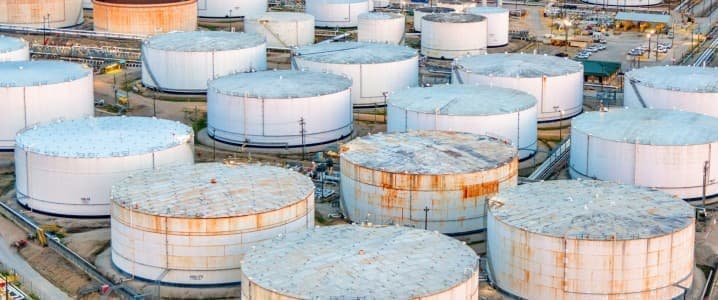China’s Crude Stockpile Gives Oil Market a Sanctions Safety Net
China’s accelerated crude stock builds in 2025 may come in handy at the end of this year as global oil flows are being redirected again in the wake of the U.S. sanctions on Russia’s top oil firms.
China, the biggest buyer of Russian crude, has a cushion to soften the blow from the sanctions, although it’s unlikely it would halt its imports from Russia.
But the stockpiles in China, estimated at between 1.2 billion and 1.3 billion barrels in strategic and commercial reserves, have put a floor under oil prices in recent months, despite fears of an imminent glut.
The reserves China has amassed so far this year could offset short-term supply disruptions, analysts say, as the U.S. sanctions target the two biggest oil producers in Russia, Rosneft and Lukoil.
“China’s current strategic petroleum reserve and commercial stocks already provide a meaningful buffer against short-term supply disruptions,” Kelly Xu, a commodity and energy strategist at Alpine Macro, told The Wall Street Journal.
During the first nine months of 2025, China boosted average crude oil imports by 2.6% from a year earlier, despite lackluster fuel demand and forecasts that gasoline and diesel demand is peaking.
China’s crude stockpiling has supported international oil prices into the $60-$70 a barrel range, despite trade wars, concerns about the economy, and soaring supply from both OPEC+ and non-OPEC+ exporters.
Unlike the United States, China does not report inventories. Analysts are looking at overall supply (domestic production plus imports) and refinery processing rates to estimate how much crude is going into strategic or commercial reserves and how much is being processed into fuels.
After a slow start to the year, China began boosting its crude oil imports in March-April and has kept elevated import levels since then. The key driver has been crude stockpiling, not a major rebound in demand, according to analysts.
Higher Chinese purchases have helped support oil prices despite the OPEC+ production hikes and persistent concerns about the growth rate of global oil demand amid inconsistent U.S. trade policies and tariffs.
From March onwards, “we started to see a very impressive rate of stockpiling, like close to one million barrels per day,” Frederic Lasserre, global head of research and analysis at commodity trading giant Gunvor, told the audience of the APPEC 2025 conference in Singapore in September.
China will continue amassing crude oil in strategic and commercial reserves well into 2026, according to Lasserre and other analysts.



Leave a Comment
Your email address will not be published. Required fields are marked *